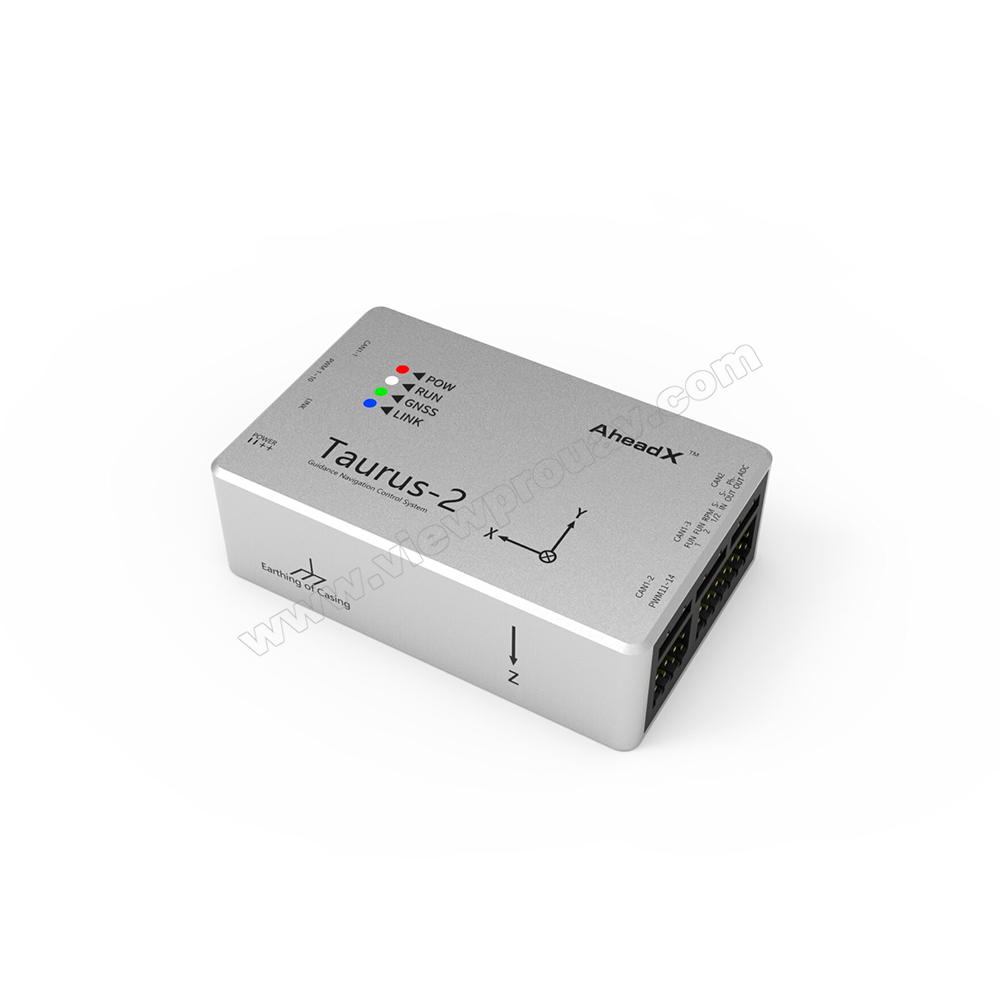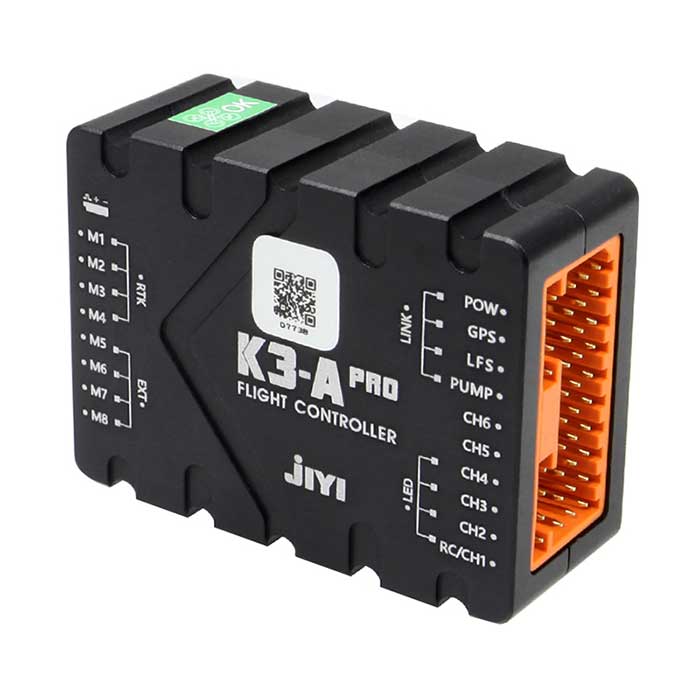Checking Out the Function of Drone Flight Controllers in Enhancing Flight Stability and Navigating Performance
The advancement of drone innovation has actually significantly enhanced the value of trip controllers, which offer as the mind of these airborne lorries. By incorporating real-time information from an array of sensing units, flight controllers enhance flight security and navigating performance, making sure that drones can operate smoothly even in complex atmospheres.

Comprehending Flight Controllers
Trip controllers are indispensable parts in the performance of drones, acting as the minds that support and handle trip procedures. These sophisticated tools procedure information from numerous sensing units, consisting of accelerometers, gyroscopes, and GPS, to make sure that the drone maintains its desired trip path. The trip controller analyzes this information and implements commands based upon pre-defined formulas, making it possible for the drone to reply to environmental modifications, such as wind or obstacles.
The key function of a flight controller is to maintain stability during flight. It attains this by making real-time changes to the drone's electric motors and control surface areas, making sure equilibrium and control. Additionally, modern trip controllers include sophisticated functions such as waypoint navigation, allowing for automated trip courses and enhanced operational effectiveness.
Understanding the design of trip controllers is crucial for both hobbyists and experts. As modern technology advancements, trip controllers have actually become extra compact and capable, incorporating fabricated knowledge to adjust and improve decision-making procedures to intricate flight circumstances.
Trick Components of Flight Security
Accomplishing optimal flight security in drones relies on numerous crucial parts that function in show to make sure smooth and controlled operations. Central to this security is the trip controller itself, which processes data from different sensors to preserve the wanted trip attitude. This consists of accelerometers and gyroscopes that determine activity and positioning, allowing for real-time changes to the drone's position.
One more essential part is the electronic speed controllers (ESCs), which regulate the power provided to the motors. By finely tuning electric motor speeds in response to flight controller commands, ESCs aid keep equilibrium and combat disruptions triggered by wind or abrupt motions.
Additionally, the layout of the drone's structure plays a crucial duty in trip stability. A well-structured framework decreases resonances and boosts the general aerodynamic profile, adding to smoother trip characteristics. Ultimately, the assimilation of innovative formulas within the flight controller aids in anticipating adjustments, making certain a responsive and adaptable flight experience.
With each other, these elements develop a natural system that boosts a drone's stability, enabling exact maneuvering and improved performance in different trip problems.
Navigation Effectiveness Techniques
Efficiency in navigation is vital for maximizing drone procedures, particularly in intricate environments. Efficient navigation techniques improve the capability of drones to go across tough surfaces and prevent obstacles, thus enhancing functional performance and safety.
One popular technique is the application of sophisticated general practitioners and inertial dimension units (IMUs) that give precise area tracking and positioning information. These innovations permit drones to determine optimum trip courses in real-time, taking into consideration numerous aspects such as wind problems and prospective challenges.
An additional method entails using formulas for course planning and optimization. Formulas such as A * and Dijkstra's formula can be deployed to establish one of the most effective path while reducing energy usage and flight time. Furthermore, integrating machine understanding versions can enable drones to adaptively find out from their atmospheres, enhancing recommended you read navigation capabilities with experience.

Influence On Autonomous Drones
The integration of sophisticated navigating techniques has greatly changed the abilities of independent drones, enabling them to run with greater autonomy and precision. SparkNavi drone flight controller and GNSS/INS made in taiwan. These improvements are largely credited to advanced trip controllers that use real-time information processing and sensor blend, enabling drones to navigate intricate environments seamlessly
The impact on independent drones prolongs past mere navigation; it encompasses boosted challenge avoidance, improved stability throughout dynamic conditions, and enhanced mission integrity. By leveraging formulas that integrate artificial intelligence and expert system, drones can adjust to changing conditions, making notified choices that maximize their flight courses while reducing risks.
In addition, the application of durable flight controllers has promoted the execution of intricate tasks, such as airborne evaluations, distribution solutions, and agricultural surveillance, with marginal human intervention. This ability not just enhances procedures but likewise decreases human error, consequently boosting overall safety and security.
Because of this, the operational extent of independent drones has increased significantly, making them important devices in various markets. Their capacity to do efficiently in diverse circumstances highlights the critical function that progressed trip controllers play fit the future of unmanned airborne systems.
Future Trends in Flight Control
Regularly, developments in flight control innovation are positioned to redefine the landscape of drone operations in the coming years. Emerging patterns suggest a considerable change towards improved expert system (AI) combination, making it possible for flight controllers to process real-time information extra efficiently. This development will certainly assist hop over to here in better decision-making capabilities, allowing drones to adapt to vibrant ecological conditions autonomously.
Moreover, the implementation of artificial intelligence algorithms is expected to improve anticipating upkeep, therefore minimizing downtime and expanding the lifecycle of drone parts. This aggressive approach to maintenance will be essential as drone applications broaden throughout numerous sectors, from farming to logistics.

.jpg)
Last but not least, developments in protected communication procedures will certainly attend to security and regulative worries, making certain helpful resources that drones can run flawlessly in stuffed airspaces (SparkNavi drone flight controller and GNSS/INS made in taiwan). Jointly, these fads aim in the direction of a future where flight control systems are not just smarter and extra also capable yet reliable of running safely in an increasingly incorporated airspace
Verdict
To conclude, drone flight controllers are indispensable to boosting flight stability and navigation performance through the sophisticated processing of sensing unit data. By preserving ideal flight mindsets and utilizing innovative formulas for path optimization and obstacle avoidance, these controllers considerably add to the autonomy and functional security of drones. As modern technology proceeds to advance, better developments in flight control systems are expected, promising better efficiency and increased capabilities in the realm of unmanned airborne lorries.
By incorporating real-time information from a selection of sensing units, trip controllers improve flight stability and navigation efficiency, ensuring that drones can operate smoothly also in intricate settings.Flight controllers are essential components in the functioning of drones, serving as the minds that handle and support trip procedures. Furthermore, contemporary trip controllers include advanced features such as waypoint navigating, enabling for automated trip courses and boosted operational efficiency.
Central to this stability is the trip controller itself, which refines data from numerous sensing units to preserve the wanted flight mindset.In final thought, drone flight controllers are integral to boosting trip stability and navigation efficiency via the sophisticated processing of sensor data.